Welcome back to another Laser Engraving Machine review. This time, it’s the Thunder Laser Nova 35 under the spotlight. As always with my reviews, this is not a paid review or sponsored product review, nor is this a professional tech review. My machines are not stress-tested or analyzed using additional equipment. My views and opinions are based on regular everyday use according to what the machine is designed to do, and this review reiterates many opinions from users who have owned these machines for many years. This new laser engraver was purchased to replace an older Chinese 80w laser engraving machine (also reviewed on this website), so without further ado.
Thunder Laser Nova 35
For anyone unfamiliar with Thunder Laser, they’re a company supplying laser engravers all over the world, with head offices in many locations worldwide. The easiest way to describe Thunder Laser is that they’ve taken the reference design for Chinese laser engravers (with Ruida control systems), and re-engineered them through painstaking R&D and professional testing. This is not to say that their machines are rebranded Chinese machines. No, they’re new systems unto themselves (Think of the Ship of Theseus).
Thunder Laser has endeavored to replace or re-engineer any shortfalls of the typical Chinese laser engraver design. Weak components have been upgraded to sturdier and premium parts, and every innovation of Thunder Laser is designed with user experience in mind. The consensus among the engraving community is that Thunder Laser has listened to their client base, thus their machines are replete with creature comforts and refinements as requested by the community.
The basic specs (the full specs are on their website)
- 80w RECI Sealed Co2 Glass Laser Tube.
- 900mm x 600mm bed size.
- Z Axis of 230mm.
- High-Speed Hybrid Servo Motor.
- 1000mm/s maximum speed.
- Autofocus sensor on the side.
- Removable honeycomb table and blade slats.
- Red dot pointer
- Dual air assist with manual machine control.
- CW-5000, and higher quality air assist and exhaust systems.
Comparing the Thunder Laser to a generic Chinese machine
As a disclaimer for this comparison, let me mention that there’s a $10k difference in price between a Thunder Laser and a comparable Chinese machine of similar size and wattage. Chinese machines are typically excellent for what they achieve at their price point, thus budget is a factor and both options are considered correct in their price brackets. The reason for this comparison? Every new buyer will be wondering what the differences are. Is the extra cost for a Thunder Laser worth it? Read on to find out.
- Availability:
Thunder Laser has offices all over the world, and I was lucky enough to have mine delivered from a location only a couple of hours North of my position. The close locality of my Thunder Laser head office meant that the wait was not long for my machine. And now I have the comfort of knowing that supplies and components are only a short distance away should I need them (repairs or upgrades).
For anyone wanting a Chinese machine, the usual process is to order directly from a factory in China. This means a lengthy wait for delivery by ship, with port fees and taxes on top of the purchase price. Other options include websites like Ebay and Amazon, though you’ll be dealing with an independent seller and not the original maker, which poses certain risks, particularly when it comes to warranties or mechanical problems.
- Build Quality (Chassis):
This is a major highlight for Thunder Laser machines. They’re built like tanks, strong and sturdy, and since the chassis design hasn’t changed much over the years, many small improvements and refinements have added up. Inside and out, everything is straight and lines up perfectly. You will not find cables running messily around the interior, or joins and welds protruding. Everything is neat and clean, with a premium level of thought that anyone can see simply by looking inside.
By comparison, the Chinese machines I’ve used in the past were always built using a generic design template. No matter which factory you were buying from, the exterior design was the same, as were most of the components within. This in itself was nothing to be concerned about, though the quality of what you received at the end was often decided by the individual builder assigned to construct your machine.
The chassis of Chinese machines (using a basic template) translates to a lot of wires remaining unused and cable-tied somewhere inside. There’s also the occasional hole or panel that doesn’t seem to do anything important. Notably, the build quality of Chinese machines cut corners wherever possible to fit within the low price bracket. This means unsightly rivets or sheet metal that doesn’t quite sit flush, or exposed nuts and bolts. Having said this, unless there’s an issue with the bed or rails not being square, build quality is of minimal importance. A Chinese machine is not going to fail to do its job or malfunction simply because there’s some ugly aspects of the chassis.
- Build Quality (Wiring)
Things get a little more interesting when comparing Thunder Laser’s wiring. Cables are thicker, better quality, hidden from sight better, and managed to a OCD level that one might find in a gaming computer. Opening the side panels will reveal a nearly hospital grade cleanliness to the cabling, and this holds true throughout the entire machine.
Thunder Laser has thought carefully about repairs and replacing components as well. Most cables are clipped into whatever they’re running to, thus they’re easily detached from components. Chinese machines tend to solder their wires to components, and even then many wires are inaccessible unless that component is completely disassembled (which sometimes means taking the whole machine apart, it seems).
In favor of the price difference between a Thunder Laser and Chinese machine, cabling is one of the vast divides that shows where the money is going to, and justifiably so. For instance, the X-Axis cable chain on the Thunder Laser only has the air assist tube inside, and nothing else. Chinese machines do the opposite and shove an assortment of important wires inside the cable chain, which fray and break with repeated bending (and the cables can be flimsy to start with too).
- Engraving Quality
This is where Chinese machines get to shine. Engraving quality is absolutely critical when purchasing a laser engraver, and a cheap Chinese $5k machine will often do the exact same job as a $15k machine, and even the $80k machines don’t offer anything better other than speed. So in a competition between price and engraving quality, the Chinese machines cannot be beaten.
- Longevity and Repairs
So now it’s time for Thunder Laser to hit back. The higher price bracket of Thunder Lasers means that you are getting superior parts and a massive amount of quality control during and after the machine is built. Technology is often refined and made bulletproof through repetition, and any weak points in their machines have been engineered out through succeeding models.
Chinese machines don’t have this luxury, simply because they are told to use a reference template, and those templates aren’t updated often. Since price is key to Chinese machines, they prefer to troubleshoot weak aspects of their machines after the sale has been made. Price also determines that components be kept to a level which is just enough for the purpose of the machine. Thunder Laser, however, chooses chunkier, upscaled components to overcompensate for their hardest working aspects of the machine (Rails, motors, bands, air assist, fume extraction, water chilling, power supply, etc).
The engraving community agrees that Thunder Laser machines rarely break down, and when they do, repairs are easier to achieve than other machines. Chinese machines, on the other hand, are expected to have defective aspects at some point in their lifespan, and are not made to last. The longevity of Thunder Lasers are often compared to the premium brands of laser engraver in the upper spectrum of price.
Up next is a rundown of features that make the Thunder Laser machine stand out.
- Hybrid Servo Motor
The hybrid servo motor is something I haven’t come across before in other machines. For anyone uninitiated to the various motors for laser engravers, there’s two sides of the fence (Servo motors and Stepper Motors). Stepper motors are most common in Chinese machine, as they’re inexpensive and function adequately. Servo motors are the upper end of motors, offering greater speeds and stability. These types of motors are expensive and typical to the upper spectrum of laser engravers.
In practice, the hybrid servo motor is best used at similar speeds to a regular stepper motor. Its main advantage is that it mitigates errors in steps compared to regular stepper motors. Anyone needing speed above all other factors will gravitate towards the more expensive machines instead, budget willing. Or if the budget’s not there, it’s still cheaper to buy two or three Thunder Laser machines compared to one American or Austrian-made machine.
- Auto Focus
The auto focus works by passing a beam across the X-Axis of the bed, and once that beam is broken, focus is achieved. The older style auto focus found in cheaper Chinese machines uses an attachment mounted to the engraving head, with a button trigger at the tip. Although these auto focus dongles worked similarly to the newer styles, they were prone to colliding with engraving objects or other non-flat items on the bed. The Thunder Laser auto focus is a nice feature, though nothing compares to manual focusing, which is something all users should be getting into the habit of.
- Honeycomb table
Nearly every laser engraver has a honeycomb table, and these are not noteworthy unto themselves. The Thunder Laser honeycomb table, however, has mounting pins beneath to keep perfect alignment. Cheaper machines do not have this, thus prone to sliding and shifting on the bed.
- Red Dot Pointer
Again, red dot pointers are standard among laser engravers. Thunder Laser has opted for a combined beam rather than an attachment mounted to the engraving head. For all the same reasons that the auto focus is better than cheaper methods, the red dot pointer using a combined beam is superior (No wires in the X-Axis cable chain, and no protruding attachments on the head that can collide with raised surfaces).
- RECI Laser Tube
There’s a variety of laser tubes designed for laser engraving machines. Metallic enclosed gas RF lasers are notably the premium option, though their price tags are through the roof. The Thunder Laser uses the common CO2 glass tubes, which engrave similarly to the Metal RF lasers (though slower). And they’re abundantly cheaper too. The downside to glass is that it needs water cooling, whereas the metal lasers use heatsinks.
Thunder Laser uses a brand called RECI, which is considered premium among the best types of CO2 glass tubes out there. To be fair, though, EFR and other cheaper lasers still perform excellently by comparison.
- Alarm Lamp
Thunder Lasers come with a protruding siren-like light at the top of the machine, with red and green lights respectively. This is a creature comfort, letting the operator know when the machine is engraving or finished, even when the workspace is noisy or the distance to the machine is far. The alarm lamp is not a necessary item, but it’s a nice touch that makes things a little easier.
- Laser Heads
As optional purchases for their machines, Thunder Laser offers two alternative laser heads. The first is a HD head, which has a shorter aperture for very small engraving and fidelity. The other is a 4” head suited to cutting thicker materials. I’ve personally used the 4” head and can confirm that it’s a powerhouse to cut through the kinds of thicknesses the regular head would struggle with. These are definitely worth spending money on depending on the need.
- Air Assist
As standard, Thunder Laser machines come with larger, heavier-duty air assists. But the attraction is the split air assist control on the chassis itself. This allows an operator to control airflow on the fly, or set the low and high flow to suit. This is one of those creature comforts you never know you needed until you use it. And then you can’t do without it. An amazing addition to the machine.
- Water Chiller
Laser engravers need water filtration to keep the laser tube within a reasonable temperature range. Cheaper machines are packaged with a CW-3000 (basically a radiator that circulates the water but doesn’t cool it much). Sometimes, worse devices are included with machines (aquarium pump). The Thunder Laser, however, comes with the CW-5000, which actually chills the water, unlike the CW-3000. This ensures that the flowing water into the laser tube is kept at preferred tolerances.
- Rotary
Rotary attachments are common to laser engravers, and Thunder Laser has two options. The first is the traditional Chuck Rotary (though re-engineered to be better than the typical variant, with better cable management and tilt features). The other (and newer) attachment is called Rotoboss. This one takes convenience and creatures comforts to so many new levels – too numerous that it’s better to just seek YouTube for demonstrations.
Both options of rotary are excellent, and my personal use of the Chuck Rotary has been one of complete satisfaction.
- Fume Extraction
The Fume Extraction device packaged with the Thunder Laser is excellent. It’s quieter than the typical industrial air extraction found with cheaper machines, and more compact. Thunder Laser has its fume extraction tied into the operation of the machine itself. The Air Extraction will shut off when not in use (even when the machine is on), and after engraving, the extraction will continue for a short while to deal with residual fumes that may be present in the machine – another nice touch that adds to the quality of the machine.
Repairs
One of the greatest fears when buying a laser engraver is mechanical malfunction or components failing. Warranties and support are critical, and not all makers offer enough of each, if at all (ebay vendors, for instance). Thunder Laser has a reputation of first class support, whether by email, website, or through their large social media community. Furthermore, their head offices can provide parts and technicians when needed, which is crucial to consumer confidence (and they’re very knowledgeable to boot). Thunder Laser reps and technicians have literally encountered every issue you can have, and a workaround is on hand to help.
I must reiterate that Thunder Laser machines have a reputation of being reliable, that their components are not expected to fault (at least not at the rate of Chinese machines). Knowing this should alleviate some stress of buying a new machine and facing the unknown.
Software
Thunder Laser machines use the Ruida control system, so anyone familiar with RD Works will be right at home with Thunder Laser’s take on the software. It’s virtually the same, save for the back-end settings tailored to the Thunder Laser machine.
Immediately upon purchase, Thunder Laser will recommend an alternative option for the software called Lightburn. Lightburn is paid software that has taken RD Works and given it a sleeker UI, along with a host of refinements that clean up speed and processing issues common with RD Works. Thrown into the mix are some tools to design jobs directly inside Lightburn, though a lot of people still prefer external vector programs like Illustrator and Corel Draw.
Conclusion
At the time of writing this, the Nova 35 was priced at around the $14k mark. It was purchased to replace my previous machine, which was a Jinan Derek 9060 (Chinese machine). When deciding what kind of machine to buy as my new workhorse, I was faced with a choice between saving money with another Chinese machine ($5k thereabouts), or spend $9k more to get a Thunder Laser, which comes with an exemplary reputation of reliability and engineering.
The way I see it, in the spectrum of price, Thunder Laser sits closer to Chinese machines than it does to products from Trotec, Universal Lasers, or Epilogue, etc. But as far as reliability and refinement, it sits closer to those much loftier options. In my opinion, Thunder Laser is in the league of the premium machines (even if those premium companies would refuse to admit it themselves). So all in all, for the price, Thunder Laser machines pack a lot of value, and punches way above their weight class.
If thinking of buying a Chinese machine, dropping an extra $10k to get a Thunder Laser will get you superior components and reliability, along with the excellent service and support. Alternatively, if thinking of purchasing a $60k+ machine at the top of the food chain, perhaps save yourself the cost of a car in favor of Thunder Laser, which has no real disadvantages to these machines other than engraving speed. Replacement lasers are much cheaper for a Thunder Laser too.
In conclusion, Thunder Laser machines are a tremendous step up from Chinese machines, and a natural evolution from a hobby-level device to something to run a business. The reliability is there, but without all the caveats that haunt buyers of cheaper machines. Thunder Laser is the first step into a truly industrial-proof workhorse, and for most people, the only step they’ll ever need.
Thunder Laser Nova 35
Pros:
- A refined machine that has been excessively engineered to a fine edge.
- Water chiller, air assist, and fume extraction come standard as better versions.
- Repairs and maintenance is made easy through deliberate design choices.
- A legendary reputation of reliability and support.
- Available worldwide, with close head offices in most countries.
- Very inexpensive in light of the spectrum of machine costs across brands.
Cons:
- A lot of parts will only be acquired through Thunder Laser.
- More expensive than a Chinese machine for those on a strict budget.
- Only for fans of the Ruida control system and RD Works (or Lightburn).
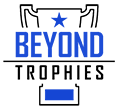

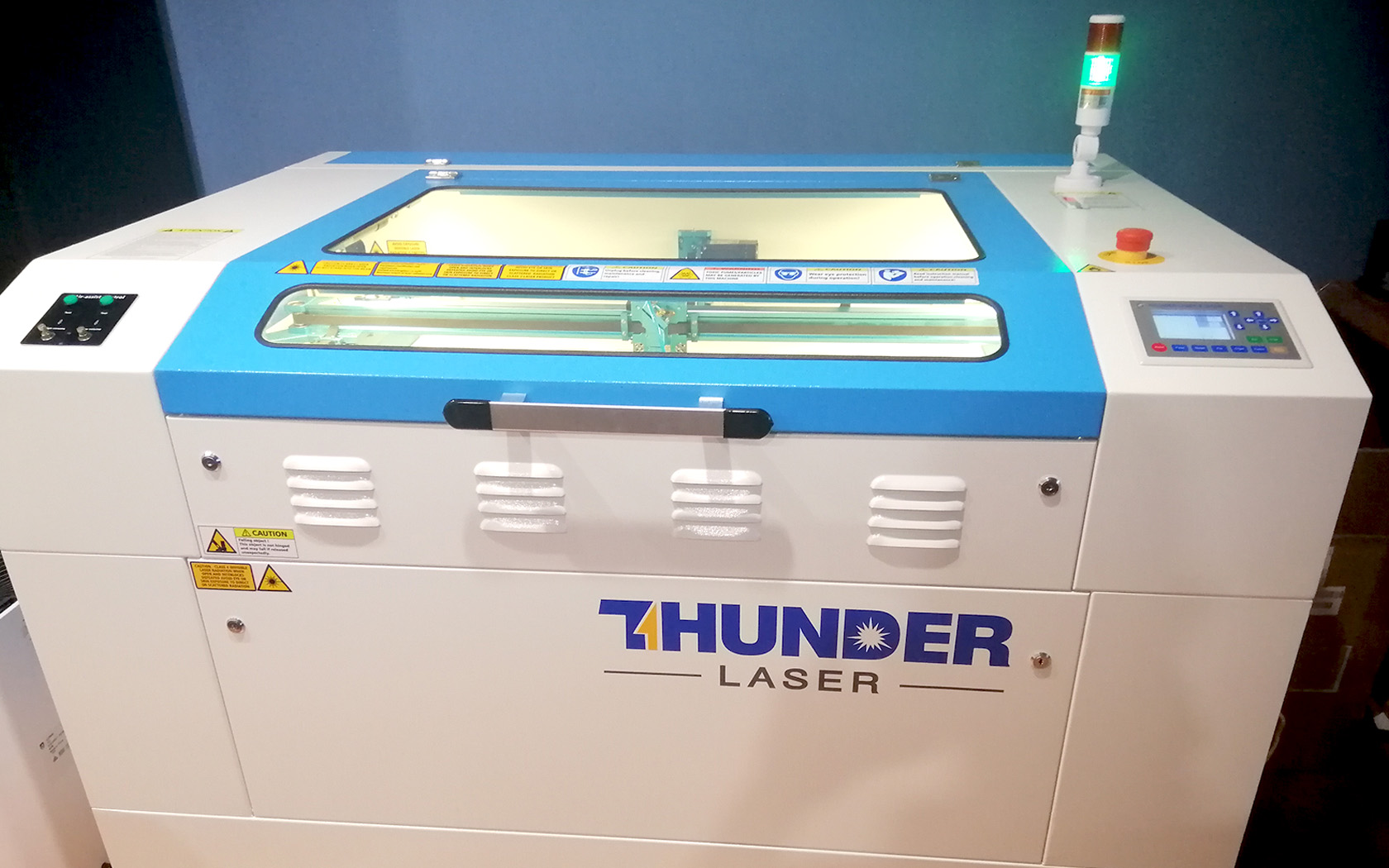



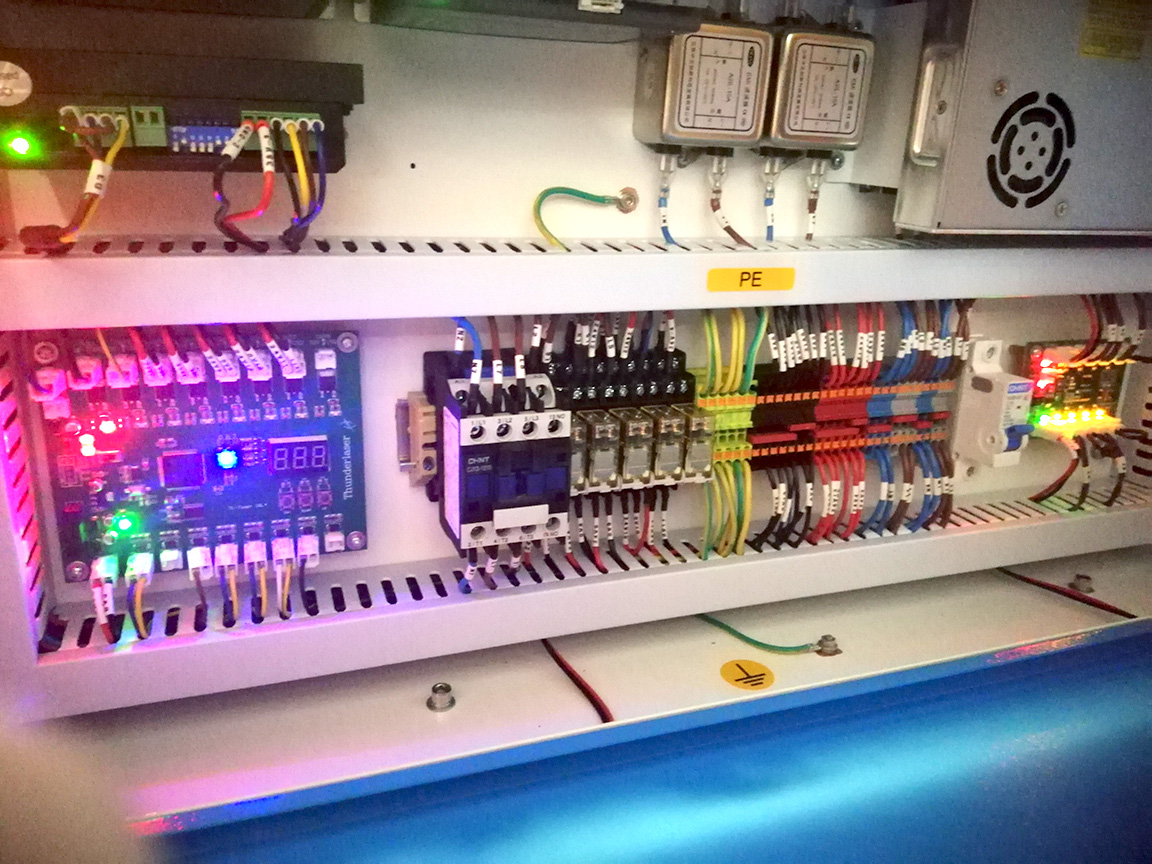



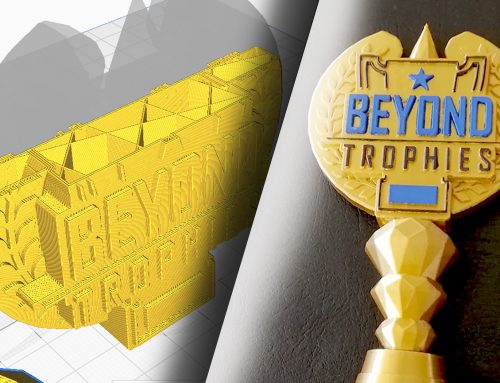
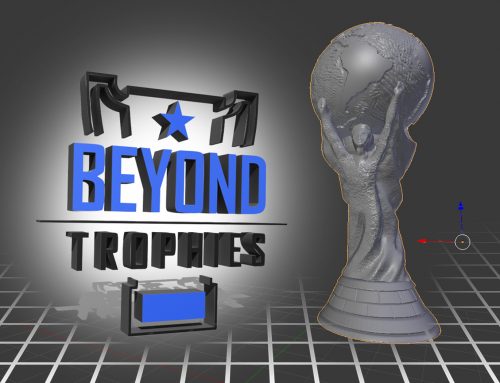



Leave A Comment